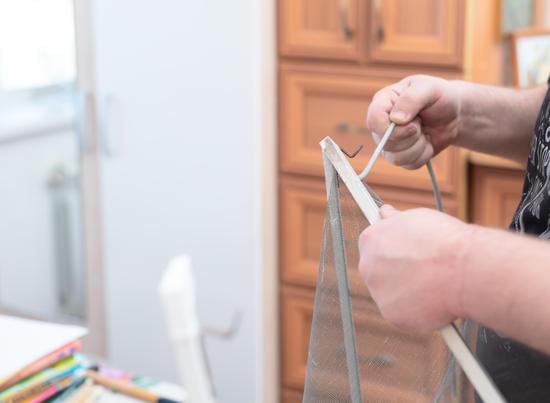What is the return on investment for home improvements? Homeowners often invest in various upgrades and renovations to enhance their living space, but understanding the potential financial benefits is crucial.
In this article, we will delve into the concept of Return on Investment (ROI) in the context of home improvements. We will explore which home improvement projects typically yield the highest returns, factors that can impact ROI, cost versus value considerations, case studies of successful ROI, comparisons between DIY and professional projects, and the difference between short-term and long-term ROI.
When it comes to home improvements, Return on Investment (ROI) refers to the financial benefit or profit gained from a particular renovation or upgrade in relation to its initial cost. Understanding the concept of ROI is essential for homeowners looking to make sound investments in their property. By analyzing and comparing different home improvement projects based on their potential returns, homeowners can make informed decisions about where to allocate their resources.
In this article, we will examine the most lucrative home improvements that generally offer high ROI, as well as explore the various factors that can influence the potential return on investment for different types of projects. Additionally, we will discuss the relationship between the cost of home improvements and the resulting increase in property value, providing insights into cost versus value considerations for homeowners.
Through real-life case studies and comparisons between DIY and professional projects, we aim to provide valuable information for homeowners seeking to maximize their return on investment from home improvement endeavors.
The Most Lucrative Home Improvements
When it comes to home improvements, it’s important for homeowners to consider the potential return on investment (ROI) of each project. Certain home improvements can significantly increase the value of a property, making them a lucrative investment in the long run. Here are some of the most lucrative home improvements that generally provide the highest return on investment:
1. Kitchen Remodel: Updating an outdated kitchen can yield a high ROI, as it is considered one of the most important spaces in a home for potential buyers. This may include replacing countertops, cabinets, and appliances to give the kitchen a modern and fresh look.
2. Bathroom Renovation: Similar to kitchens, bathrooms are also high-traffic areas that can greatly impact the value of a home. Upgrading fixtures, tiles, and adding modern amenities such as a walk-in shower or a soaking tub can increase the overall appeal of the property.
3. Exterior Improvements: Curb appeal plays a significant role in the perceived value of a home. Investing in landscaping, exterior painting, and improving the overall curb appeal can attract more potential buyers and increase property value.
These projects are generally considered to have a high ROI because they directly impact the aesthetic appeal and functionality of a home. However, it’s important to remember that the actual ROI will depend on various factors such as location, market conditions, and quality of workmanship.
Before embarking on any home improvement project, homeowners should carefully consider their specific goals and priorities. Understanding what their main objectives are will help them make informed decisions about which projects to undertake based on their budget and expected returns.
For those who are unsure about which projects would yield the highest ROI for their specific property, consulting with real estate professionals or contractors can provide valuable insight into which improvements would be most beneficial for increasing property value over time. By carefully selecting home improvement projects with a high potential for ROI, homeowners can effectively enhance their living space while also making smart financial investments.
Factors Affecting ROI for Home Improvements
When considering home improvements, it’s important to understand the various factors that can impact the return on investment (ROI) for different projects. While some improvements may result in a significant increase in property value, others may not provide the same level of return. Here are some key factors to consider when evaluating the potential ROI for home improvement projects:
1. Location: The location of your home plays a significant role in determining the ROI for home improvements. In high-demand areas, certain improvements like kitchen remodels or bathroom upgrades tend to yield a higher return compared to properties in less desirable locations.
2. Market Trends: Keeping an eye on current market trends is crucial when considering home improvements. Certain features or upgrades that are popular among buyers at one point may lose their appeal over time, affecting the potential ROI.
3. Quality of Work: The quality of workmanship and materials used for home improvements can greatly influence the ROI. Skilled labor and high-quality materials often result in a better return compared to subpar work and cheap materials.
4. Energy Efficiency: With growing concern for sustainability and energy efficiency, investments in green technologies such as solar panels, energy-efficient windows, or insulation can significantly increase the overall value of your property.
5. Maintenance Costs: Some home improvements may have low upfront costs but require frequent maintenance, which could impact the long-term ROI. On the other hand, investing in low-maintenance features like metal roofing or composite decking can lead to long-term cost savings and increased property value.
Understanding these factors is essential when determining which home improvement projects will provide the best return on investment for your specific property and location.
Cost vs Value
When homeowners invest in home improvements, they naturally want to know what the return on investment will be. One crucial factor to consider is the relationship between the cost of the improvement and the potential increase in property value. This can vary greatly depending on the type of improvement and the current state of the property.
According to Remodeling Magazine’s 2021 Cost vs. Value Report, some of the most lucrative home improvements in terms of ROI include manufactured stone veneer, garage door replacement, minor kitchen remodel, and deck addition. These types of improvements typically recoup a high percentage of their cost when it comes to increasing property value. On average, these projects recoup anywhere from 60% to 97.1% of their initial cost upon resale.
It’s important to note that not all home improvements are equal when it comes to ROI. Factors such as location, housing market conditions, and the quality of workmanship can significantly impact the potential increase in property value. Additionally, certain improvements may appeal more to potential buyers, thus increasing their perceived value and ultimately contributing to a higher ROI for homeowners. Therefore, it’s essential for homeowners to carefully research and consider these factors before undertaking any home improvement project.
| Type of Improvement | Average ROI (%) |
|---|---|
| Manufactured Stone Veneer | 1% |
| Garage Door Replacement | 94% |
| Minor Kitchen Remodel | 2% |
Case Studies
When it comes to home improvements, many homeowners are often curious about what kind of return on investment they can expect. To gain a better understanding of the potential for a significant return on investment, it is helpful to look at real-life case studies of homeowners who have seen success in this area. By examining these examples, we can gain valuable insights into the factors that contribute to a high ROI for home improvement projects.
Upgraded Kitchen and Bathrooms
One common example of a home improvement project that has resulted in a significant return on investment for homeowners is the upgrade of kitchens and bathrooms. In one case study, a homeowner invested in modernizing their kitchen and bathrooms with new fixtures, appliances, and stylish finishes. As a result, the property’s value increased substantially, allowing the homeowner to recoup the majority of their investment when they sold the house.
Outdoor Living Spaces
Another compelling case study involves the addition of outdoor living spaces such as patios, decks, or landscaping enhancements. One homeowner transformed their backyard into an inviting outdoor oasis complete with a deck and beautiful landscaping. This led to an increase in property value and made the home more attractive to potential buyers when it came time to sell. The return on investment for this particular project was quite substantial, showcasing the potential for high returns from outdoor improvements.
Energy-Efficient Upgrades
In another case study, a homeowner decided to invest in energy-efficient upgrades such as installing solar panels or upgrading insulation. These improvements not only reduced energy costs for the homeowner while living in the property but also significantly increased its appeal to environmentally conscious buyers when they decided to sell. As a result, they were able to see a significant return on their initial investment in energy-efficient upgrades.
By examining these real-life examples of homeowners who have successfully achieved a significant return on investment from their home improvement projects, it becomes clear that certain types of upgrades tend to be more lucrative than others. Whether it’s upgraded kitchens and bathrooms, outdoor living spaces, or energy-efficient upgrades – these case studies demonstrate how strategic home improvements can lead to substantial returns when it comes time to sell.
DIY vs Professional
When it comes to home improvement projects, one of the key decisions homeowners often face is whether to tackle the project themselves or hire a professional contractor. This decision can have a significant impact on the return on investment (ROI) for the project, as both DIY and professional projects come with their own set of advantages and potential drawbacks.
DIY Home Improvements
Many homeowners are drawn to the idea of taking on DIY home improvement projects as a way to save money on labor costs. With the abundance of online tutorials and guides available, DIY projects can be appealing for those who are confident in their skills and willing to put in the time and effort required. However, it is important to consider the potential risks involved, such as lack of experience leading to costly mistakes or safety hazards.
Professional Contractors
On the other hand, hiring a professional contractor for home improvements can provide peace of mind knowing that the work is being handled by skilled and experienced professionals. While this option may come at a higher upfront cost due to labor expenses, it often results in higher quality work and a faster completion time. Additionally, many homebuyers are willing to pay more for properties with professionally-done renovations, potentially increasing the overall ROI.
Ultimately, when considering whether to pursue a DIY approach or hire a professional for home improvement projects, it is important for homeowners to carefully weigh their own skill level, available time and resources, as well as the potential long-term impact on property value. In some cases, certain projects may be more suitable for DIY efforts while others may require expert craftsmanship in order to maximize ROI.
Long-Term vs Short-Term ROI
When it comes to home improvements, homeowners often have to consider whether they want immediate benefits or are willing to wait for a longer-term payoff. Immediate benefits could include energy savings, increased comfort, or aesthetic appeal, while longer-term payoffs may come in the form of increased property value. Understanding the difference in return on investment for these different types of home improvements is crucial for making informed decisions.
For example, installing energy-efficient windows and doors can provide immediate benefits in terms of lower energy bills and increased comfort by reducing drafts and noise. However, these improvements may take several years to pay off in terms of increased property value. On the other hand, adding a new bathroom or renovating a kitchen may not provide as much immediate benefit in terms of cost savings, but can significantly increase the resale value of the home over time.
Ultimately, determining which type of return on investment is preferable depends on the homeowner’s specific goals and priorities. Some homeowners may prioritize immediate benefits for their own enjoyment and comfort, while others may be more focused on maximizing their property’s long-term value.
According to a study by Remodeling Magazine, some of the home improvements with the highest return on investment include manufactured stone veneer (92.1% ROI), garage door replacement (94.5% ROI), and minor kitchen remodel (77.6% ROI). These are examples of improvements that offer a balance between immediate benefits and long-term payoffs.
| Home Improvement | Return on Investment |
|---|---|
| Manufactured Stone Veneer | 1% |
| Garage Door Replacement | 5% |
| Minor Kitchen Remodel | 6% |
Conclusion
In conclusion, the return on investment for home improvements can vary greatly depending on the type of project, the quality of work, and the current real estate market. As discussed in this article, certain home improvements have been shown to consistently provide a high return on investment, such as kitchen remodels, bathroom renovations, and adding a deck or patio. These improvements not only enhance the overall aesthetic appeal of a property but also contribute to its long-term value.
It is important for homeowners to carefully consider the cost versus value aspect when planning home improvement projects. While it may be tempting to choose upgrades that are trendy or luxurious, it is crucial to evaluate whether these investments will yield a significant return when it comes time to sell the property. In some cases, simple and cost-effective improvements may actually offer a better return on investment than more expensive ones.
Ultimately, homeowners should approach home improvement projects with a strategic mindset, focusing on enhancements that will not only improve their quality of life but also contribute to long-term financial benefits. By conducting thorough research, obtaining multiple quotes from contractors, and considering the potential impact on property value, homeowners can make informed decisions about which improvements will offer the best return on investment for their specific circumstances.
The key is to strike a balance between personal preferences and smart financial decision-making in order to maximize the potential return on investment.
Frequently Asked Questions
What Is the Rate of Return on Home Improvement?
The rate of return on home improvement refers to the percentage increase in value that a particular renovation or upgrade will bring to the home. It is essential for homeowners to consider this when deciding which projects to undertake.
What Is ROI on Home Improvements?
ROI on home improvements, or Return on Investment, is a measure of how much value a particular home improvement project will add to the property compared to its cost. This calculation helps homeowners make informed decisions about which renovations are most beneficial.
What Home Renovation Has the Highest Return?
The home renovation with the highest return varies depending on factors such as location, market demand, and current trends. Generally, kitchen remodels and bathroom additions tend to have high returns due to their impact on overall property value and desirability among buyers.
Researching local real estate trends can help determine which renovation will yield the highest return in a specific area.

I’m thrilled to have you here as a part of the Remodeling Top community. This is where my journey as an architect and remodeling enthusiast intersects with your passion for transforming houses into dream homes.





